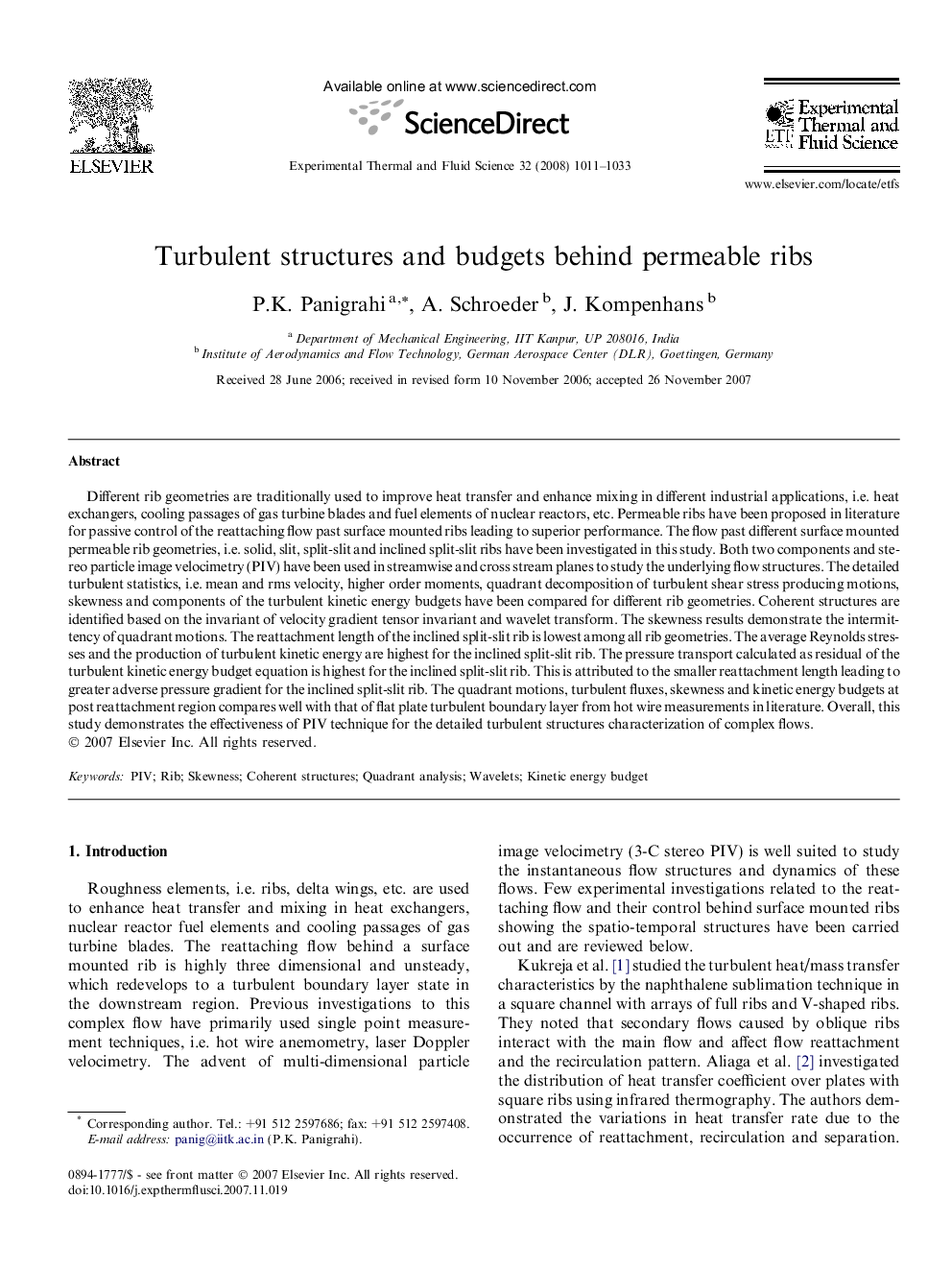| کد مقاله | کد نشریه | سال انتشار | مقاله انگلیسی | نسخه تمام متن |
|---|---|---|---|---|
| 652633 | 885032 | 2008 | 23 صفحه PDF | دانلود رایگان |

Different rib geometries are traditionally used to improve heat transfer and enhance mixing in different industrial applications, i.e. heat exchangers, cooling passages of gas turbine blades and fuel elements of nuclear reactors, etc. Permeable ribs have been proposed in literature for passive control of the reattaching flow past surface mounted ribs leading to superior performance. The flow past different surface mounted permeable rib geometries, i.e. solid, slit, split-slit and inclined split-slit ribs have been investigated in this study. Both two components and stereo particle image velocimetry (PIV) have been used in streamwise and cross stream planes to study the underlying flow structures. The detailed turbulent statistics, i.e. mean and rms velocity, higher order moments, quadrant decomposition of turbulent shear stress producing motions, skewness and components of the turbulent kinetic energy budgets have been compared for different rib geometries. Coherent structures are identified based on the invariant of velocity gradient tensor invariant and wavelet transform. The skewness results demonstrate the intermittency of quadrant motions. The reattachment length of the inclined split-slit rib is lowest among all rib geometries. The average Reynolds stresses and the production of turbulent kinetic energy are highest for the inclined split-slit rib. The pressure transport calculated as residual of the turbulent kinetic energy budget equation is highest for the inclined split-slit rib. This is attributed to the smaller reattachment length leading to greater adverse pressure gradient for the inclined split-slit rib. The quadrant motions, turbulent fluxes, skewness and kinetic energy budgets at post reattachment region compares well with that of flat plate turbulent boundary layer from hot wire measurements in literature. Overall, this study demonstrates the effectiveness of PIV technique for the detailed turbulent structures characterization of complex flows.
Journal: Experimental Thermal and Fluid Science - Volume 32, Issue 4, February 2008, Pages 1011–1033